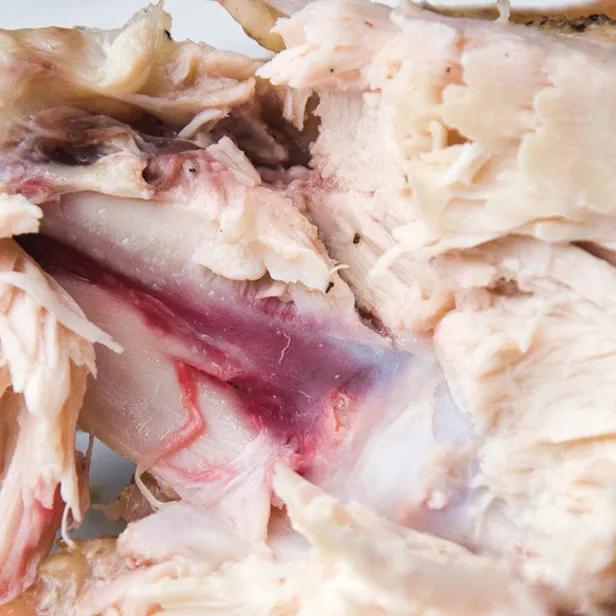When it comes to cooking meat, one of the most common concerns is ensuring that it is cooked thoroughly and safely. However, if you've ever smoked chicken legs, you may have noticed that they often have a pink hue on the inside. This can be a cause for concern for some people, as they may associate pink meat with undercooked or unsafe food. In this article, we will explore why smoked chicken legs may appear pink inside and whether or not it is safe to consume.
Chemical Changes During Cooking
During the cooking process, chemical changes occur in the meat that can affect its appearance. When chicken legs are smoked, the oven gases in a heated gas or electric smoker react chemically with the hemoglobin in the meat tissues. This reaction gives the meat a pink tinge, similar to what you may observe when grilling or smoking other types of meat.
It's important to note that the pink color doesn't necessarily mean that the chicken legs are undercooked. Instead, it is a natural chemical reaction that occurs due to the interaction between the oven gases and the meat. The extent of the pink color can vary depending on factors such as the age of the bird and the thickness of its skin.
Younger Birds and Pink Meat
Younger birds, such as chickens, tend to have thinner skins compared to older birds. This means that oven gases can more easily penetrate the flesh and react with the hemoglobin, resulting in a more pronounced pink color. Therefore, if you are smoking chicken legs from younger birds, it is more likely that you will notice a pink hue on the inside.
However, this pink color does not necessarily indicate that the meat is undercooked or unsafe to eat. It is essential to measure the internal temperature of the chicken legs using a meat thermometer to ensure that they reach the appropriate temperature for safe consumption.
Safe Internal Temperature for Chicken
According to the Food Safety and Inspection Service (FSIS), chicken should be cooked to an internal temperature of 165°F (74°C) to ensure that any harmful bacteria present in the meat are destroyed. Using a meat thermometer is the most reliable way to determine whether the chicken legs are cooked to a safe temperature.
While the pink color can be a bit disconcerting, as long as the chicken legs reach the recommended internal temperature, they are safe to eat. The smoking process can result in a pink color, but it does not necessarily mean that the meat is undercooked.

Can I eat smoked chicken legs if they are pink inside?
Yes, you can eat smoked chicken legs if they are pink inside, as long as they have reached the recommended internal temperature of 165°F (74°C).
How can I ensure that my smoked chicken legs are cooked thoroughly?
Using a meat thermometer is the best way to ensure that your smoked chicken legs are cooked thoroughly. Insert the thermometer into the thickest part of the meat, avoiding the bone, and make sure it reaches 165°F (74°C).
Why do younger birds show more pink on the inside?
Younger birds have thinner skins, which allow the oven gases to reach the flesh more easily. This can result in a more pronounced pink color on the inside of the smoked chicken legs.
In Conclusion
Smoked chicken legs may appear pink inside due to chemical changes that occur during the cooking process. While this pink color may be concerning to some, it does not necessarily indicate that the meat is undercooked or unsafe to eat. It is crucial to use a meat thermometer to ensure that the chicken legs reach the recommended internal temperature of 165°F (74°C) to guarantee their safety. So, the next time you smoke chicken legs and notice a pink hue, rest assured that it is simply a natural reaction and not a cause for alarm.
If you want to know other articles similar to Smoked chicken legs: why are they pink inside? you can visit the Cooking category.


Related Articles